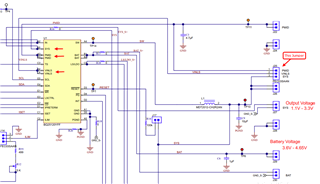Hi there,
I'm a bit confused about the J25 jumper on the BQ2512x evaluation board. It seems to offer PMID-VINLS or SYS-VINLS configurations.
While PMID-VINLS, I understand PMID acts as a power input when VIN is valid and the battery is charging (like an LDO), I'm unsure about the purpose of the SYS-VINLS connection.
Can anyone explain the use case for configuring J25 as SYS-VINLS?
here is link of document (https://www.ti.com/lit/ug/sluubc8a/sluubc8a.pdf?ts=1710153209015&ref_url=https%253A%252F%252Fwww.ti.com%252Fproduct%252FBQ25121A)
Thanks!


